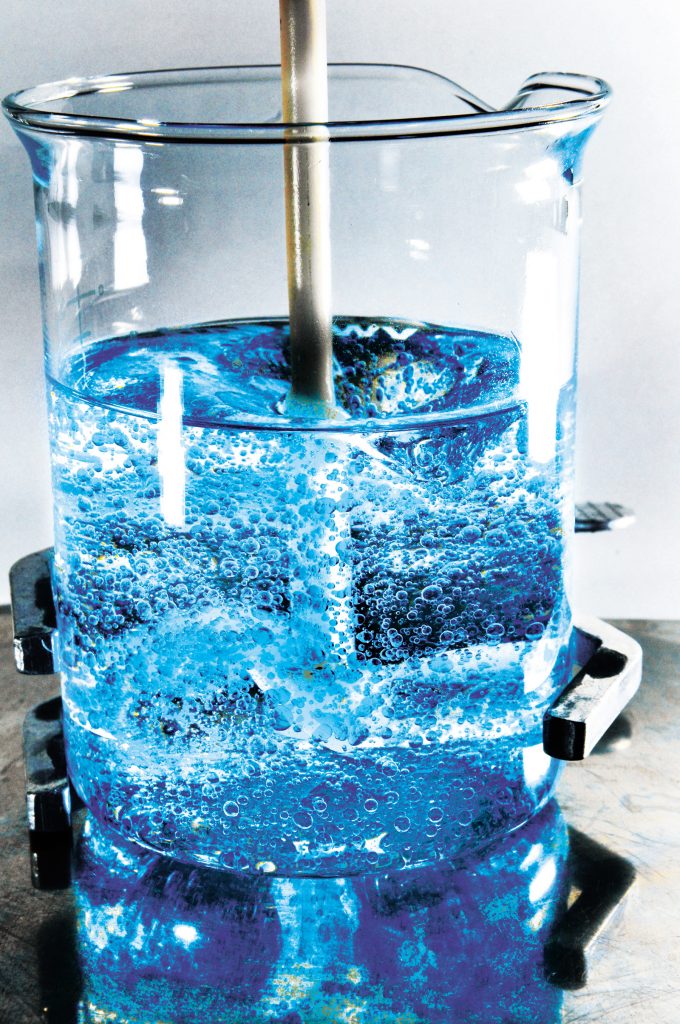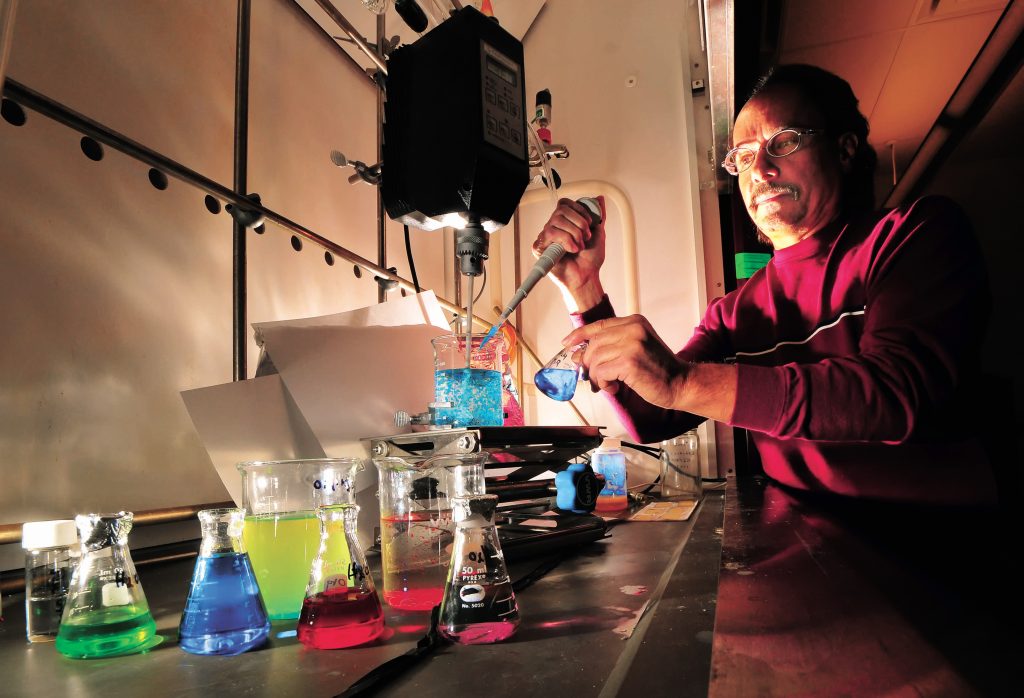
ALBUQUERQUE, N.M. — Microencapsulation isn’t a new technology, but it’s always finding new applications. Familiar uses include the scratch-and-sniff perfume ads in magazines, certain time-release pharmaceuticals, and (perhaps mostly for an older generation) carbonless copy paper.
Now Sandia National Laboratories resident microencapsulation expert, Duane Schneider, is working with an Albuquerque company to use microencapsulation technology in a novel self-warming hand and body lotion.
Microencapsulation, as its name suggests, is the creation of a tiny capsule (or, in practice, lots of tiny capsules), usually just microns in diameter, containing a particular material. In practice, microencapsulation entails placing a spherical shell composed of a synthetic or natural polymer completely around another chemical. That shell delays or slows the release of the core material. When the polymer shell dissolves or is ruptured by pressure, the material it encapsulates is released.
In addition to the familiar uses noted above, microcapsules have found uses in the pharmaceutical, agricultural, cosmetic, and food industries and have been used to encapsulate oils, aqueous solutions, alcohols, and various solids.
Schneider didn’t start out as the microencapsulation go-to guy at Sandia, but a need arose and he stepped forward to fill it, learning everything he could about the subject, which can be as much an art as a science. Microencapsulation work is but one aspect of Schneider’s job in the Organic Materials department — he also supports a variety of nuclear weapon, alternative energy, and nanoscience programs as a chemical technologist. Over the years he’s developed microencapsulation solutions for a number of critical national security-related projects. For example, his microencapsulation work has found its way into Sandia technology designed to detect explosive materials.

Sandia researchers aren’t the only ones who’ve come knocking on Schneider’s door. Not long ago, Kevin Mallory, owner and president of Formulab, an Albuquerque-based contract manufacturer of personal care products, had an innovative idea for a potentially patentable topical lotion. This lotion requires that two ingredients remain separated until time of use. Mallory, a chemist himself, knew the underlying chemistry for this product was sound. The challenge was: How do you keep the components separated until time of use? There were options: You could bottle the ingredients separately, the way epoxy glues are packaged. A more desirable solution, Mallory thought, would be to use a microencapsulation technique that would allow both active components of the lotion to live together in the same bottle. One or both key ingredients would be encapsulated; only when gently rubbed — as when applying a lotion — would the encapsulating polymer rupture, releasing the active ingredients inside and allowing the components to combine.
Mallory was convinced he had a winning idea but didn’t have the microencapsulation expertise to prove out the concept himself. That’s when he turned to Sandia and its Small Business Assistance (NMSBA) program. The folks in the program linked up Mallory with Schneider and Schneider’s boss, Mike Kelly. The three talked about Mallory’s idea and what he’d like to accomplish. Schneider and Mike agreed that Sandia could help, and Mallory and Schneider began working together.
As Schneider moved ahead on the project, he invited Mallory to come and observe the work in the Center for Integrated Nanotechnologies (CINT) facility on Eubank Boulevard, just outside the Eubank Gate.
Mallory says his interaction with Sandia was invaluable. “This was like a crash course in microencapsulation; it really accelerated our learning curve. It helped us a tremendous amount,” he says.
Mallory characterizes the Sandia relationship as “absolutely fantastic” and, speaking of the NMSBA program says, “I’ve been thinking about how lucky I am to live in a community where this kind of help is available.”
Ultimately, the project ended on a positive note.
“We were able to show that we could microencapsulate the materials,” Schneider says, adding that a follow-on agreement with Formulab may involve looking at some alternative materials.

